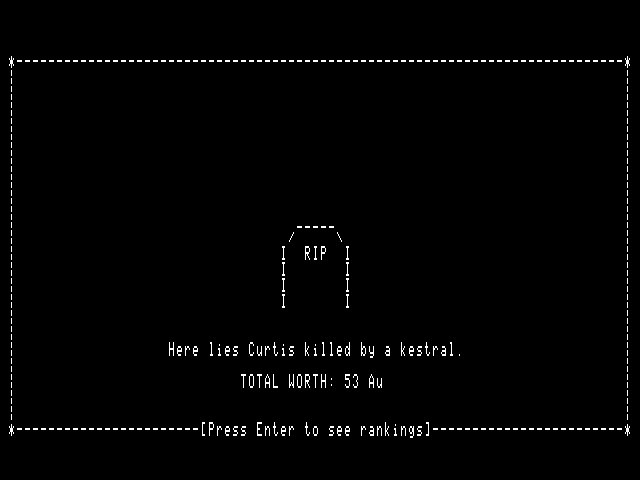
Rogue death screen
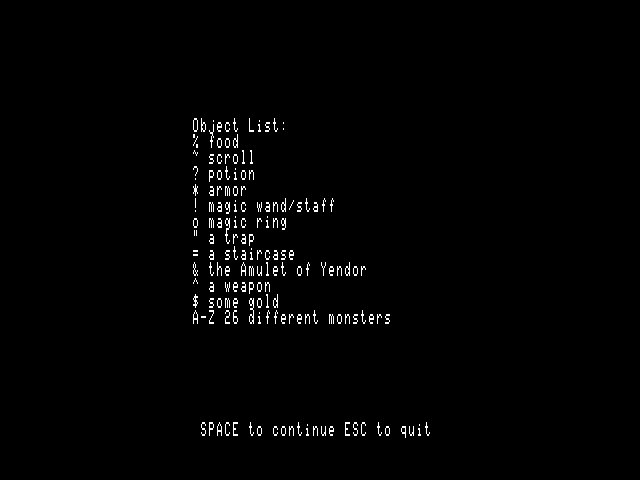
Rogue object help screen - hardware text mode
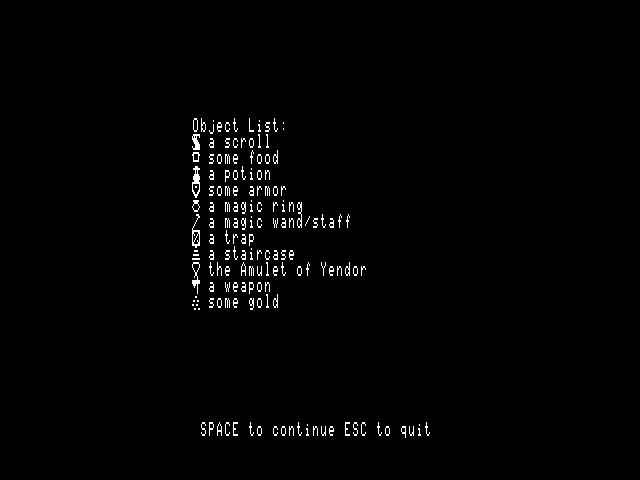
Rogue object help screen in graphics mode
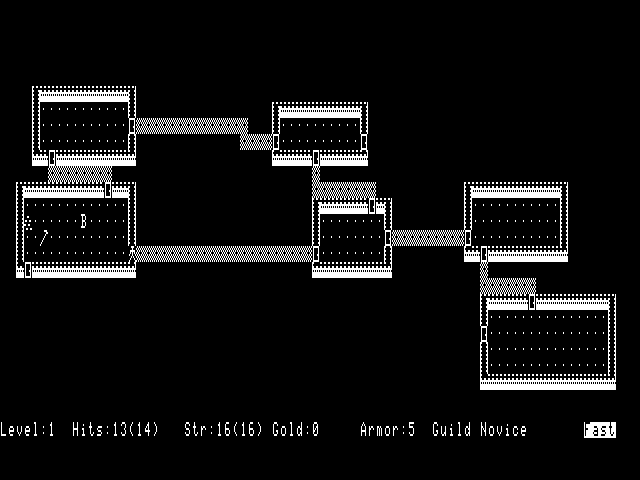
Rogue game play screen in graphics mode
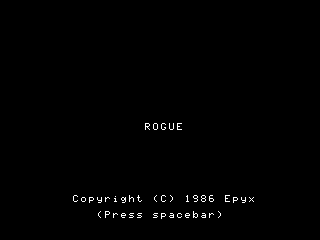
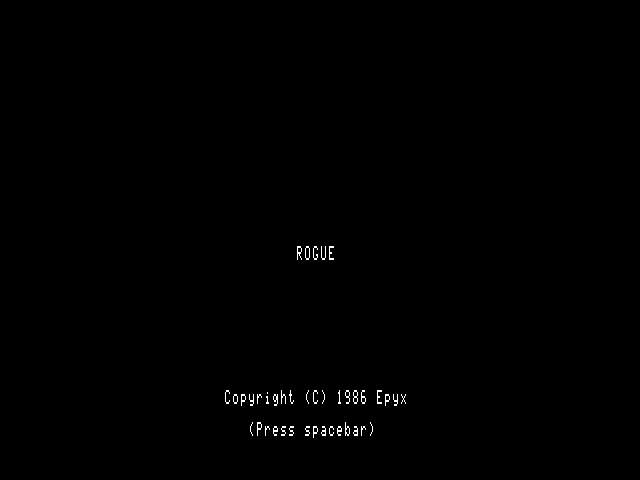
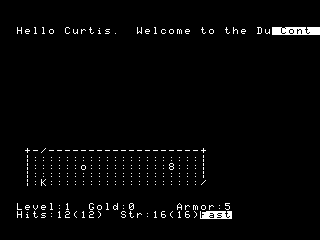
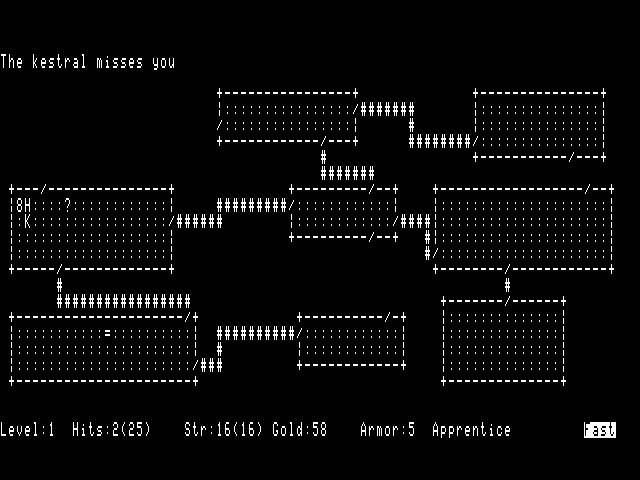




Rogue was the first OS-9 Level II game for the Coco 3, and in fact had an earlier version of OS-9 than the official release version (that came out a few months later). In fact, for the first few months of the Coco 3's public availability, OS-9 aficionado's were using Rogue to make OS-9 Level II boot disks, complete with some of the windowing software, and combining it with Level 1 utilities, language and commands in order to make a "full" Level II system.
The game itself is a Dungeon's and Dragons style game, with a somewhat real time (but technically still turn based) feel, where one has to descend 26 levels into a dungeon, recover the Amulet of Yendor, and then climb your way back to the surface. You have to map (by moving around in the dungeon) everything as you go, and in later level's, you will only be able to see you're immediate surroundings in some rooms, as the rooms are not lit. It was innovative for it's time (on it's original platforms; the mainframes and the mini-computer's of the late 1970's) in that it actually tried to graphically represent (with text symbols) the dungeons you were wandering through. A few primitive versions existed on computers at the University of Berkely, California, and the University of Santa Cruz California, in the late 1970's. In 1980, it became widespread in university world, as it became a standard part of the distribution of BSD Unix. By this time the game had grown in complexity to include all the different monsters, potions, scrolls, wands, weapons, armour, etc. that are found in the Coco version. It was ported to just about any microcomputer that could handle an 80 column screen.
The Coco version had a few different things about it compared to other platforms: Since it ran under OS-9, it could multi-task with other programs on the system. It had a cheat/test mode built in, that could be enabled by a single byte patch to the code, and it had a special graphics font (for those with 256K RAM or more) to make the dungeons and special objects look much better than the straight text characters. It also could be ran in a shrunken window (down to 28x12, so that one could play it while looking at other programs on the same screen), and run multiple times on the same computer at the same time.
Title: Rogue
Author: Mike L. Leber, Ron B. Miller, James Long & Ed Rosenzweig for Epyx (based on minicomputer/mainframe version by Michael Toy, Ken Arnold & Glenn R. Wichman)
Publisher: Tandy/Radio Shack
Released: 1986
Requires: Color Computer 3 ONLY, 128K RAM (256K for graphics font version).
Download RogueFont.lzh. This is an alternative graphics font for Rogue made by Sean Driscoll in 1991.
Download rogue-cheatmodeinstructions.txt. These are instructions on how to re-enable the cheat/test mode that Epyx left in the Coco version of Rogue. It also has complete information on all of the wands, scrolls, spells, armour, weapons, potions, etc. found in Rogue.